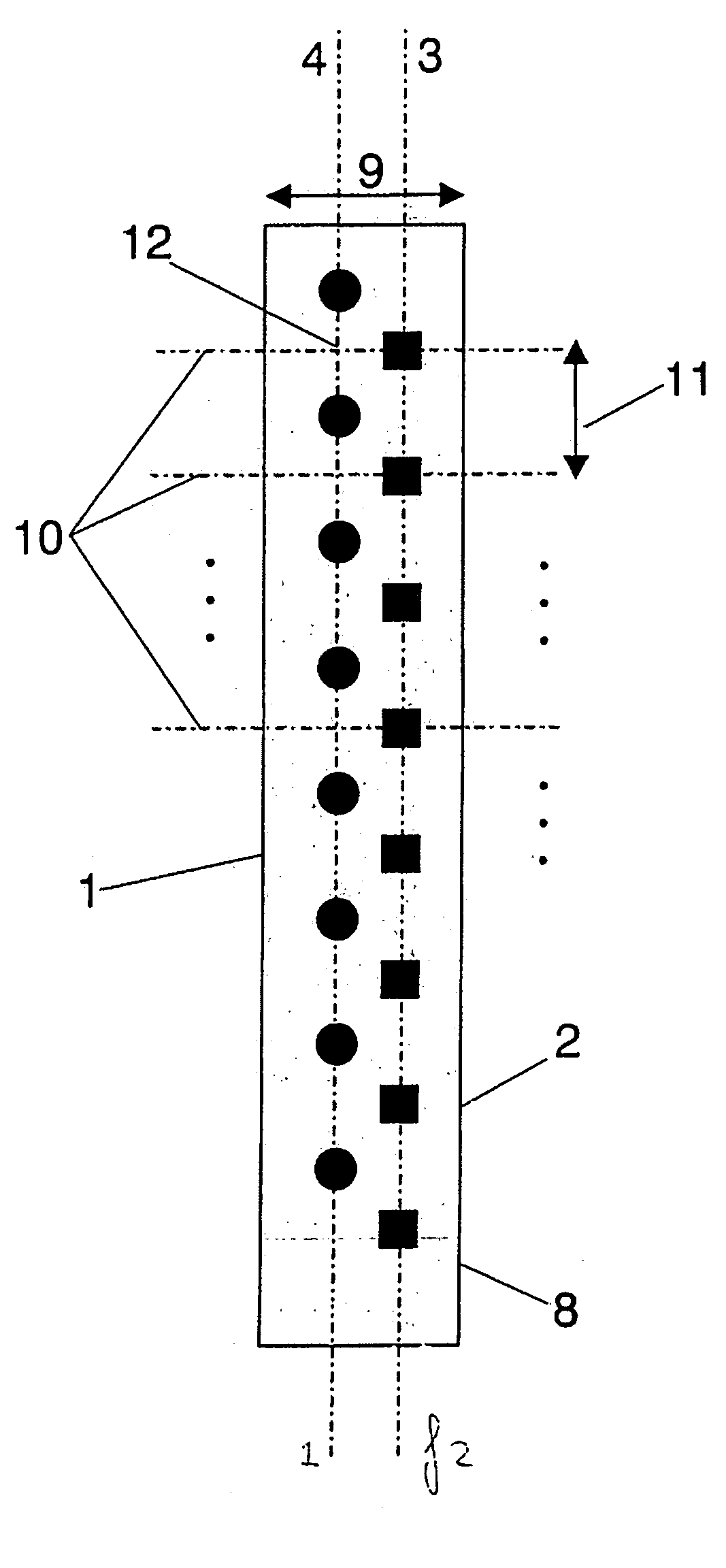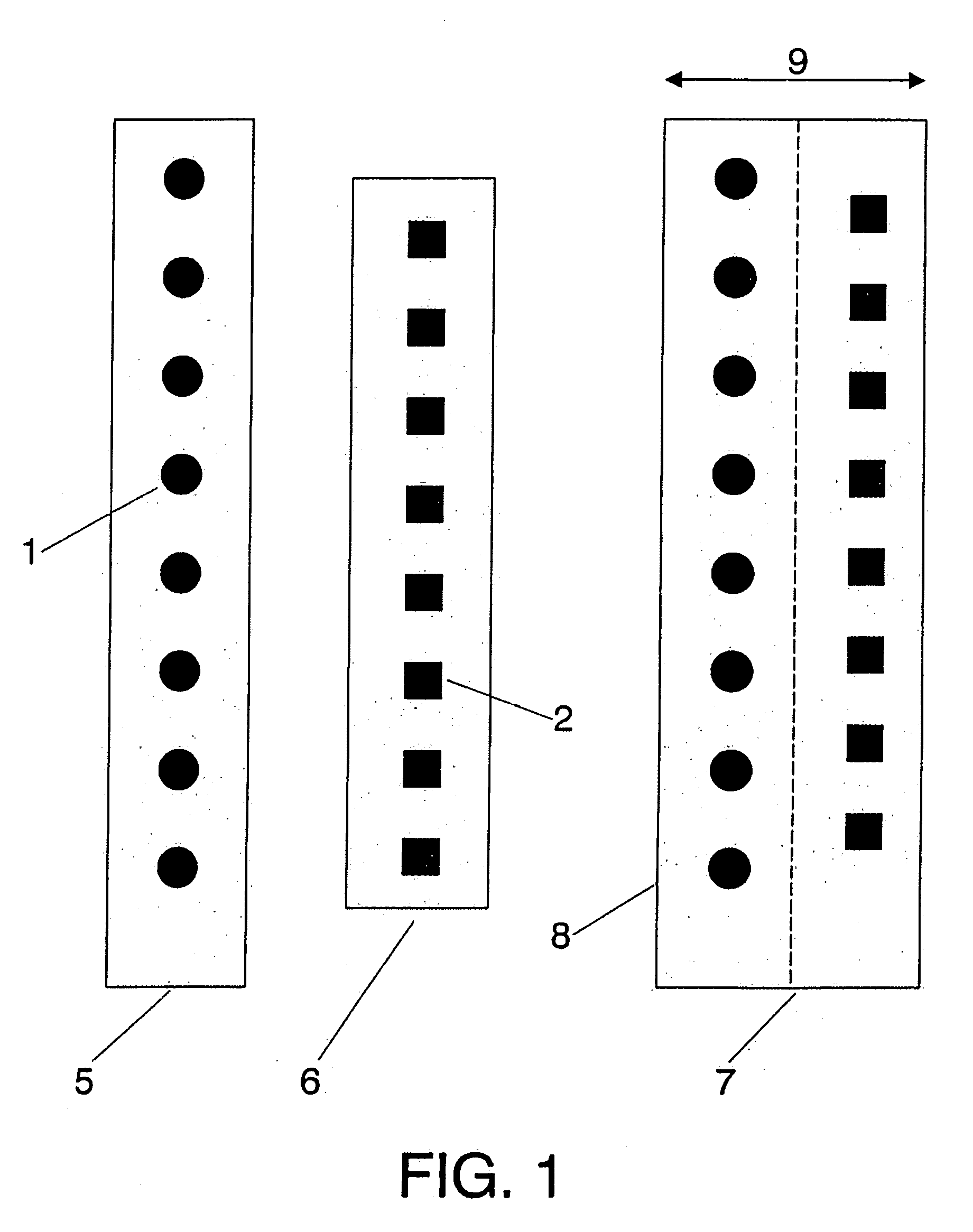Dual-band dual-polarized antenna array
- Summary
- Abstract
- Description
- Claims
- Application Information
AI Technical Summary
Benefits of technology
Problems solved by technology
Method used
Image
Examples
Embodiment Construction
[0020] An scheme of the basic layout for the spatial arranging (interleaving) of the antenna elements is shown in FIG. 2. The solid dots (1) display the positions of the elements for the lower frequency f1, while the squares (2) display the positions for the antenna elements for the upper frequency f2. Antenna elements for the higher frequency band f2 are aligned along a vertical axis (3) with the desired spacing between elements (11). Said spacing is slightly smaller than a full-wavelength (typically below 98% the size of the shorter wavelength) for a maximum gain, although it can be readily seen that the spacing can be made shorter depending on the application. A second vertical column of elements for the lower frequency band f1 is aligned along a second vertical axis (4) placed next to said first axis (3) and substantially parallel to it. In the particular arrangement of FIG. 2 low-frequency elements are placed along the left axis (4) while high-frequency elements are place along...
PUM
 Login to View More
Login to View More Abstract
Description
Claims
Application Information
 Login to View More
Login to View More - R&D
- Intellectual Property
- Life Sciences
- Materials
- Tech Scout
- Unparalleled Data Quality
- Higher Quality Content
- 60% Fewer Hallucinations
Browse by: Latest US Patents, China's latest patents, Technical Efficacy Thesaurus, Application Domain, Technology Topic, Popular Technical Reports.
© 2025 PatSnap. All rights reserved.Legal|Privacy policy|Modern Slavery Act Transparency Statement|Sitemap|About US| Contact US: help@patsnap.com



